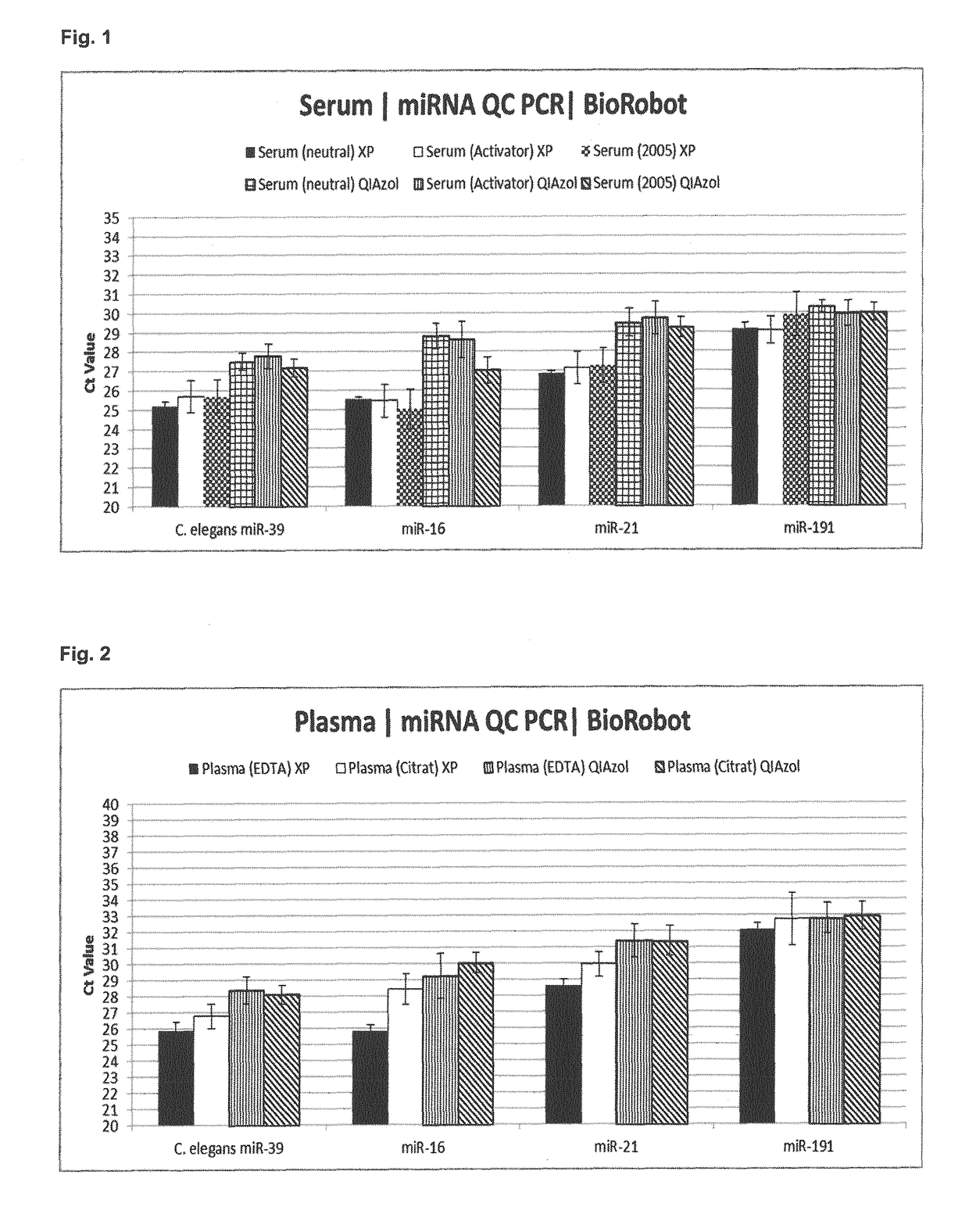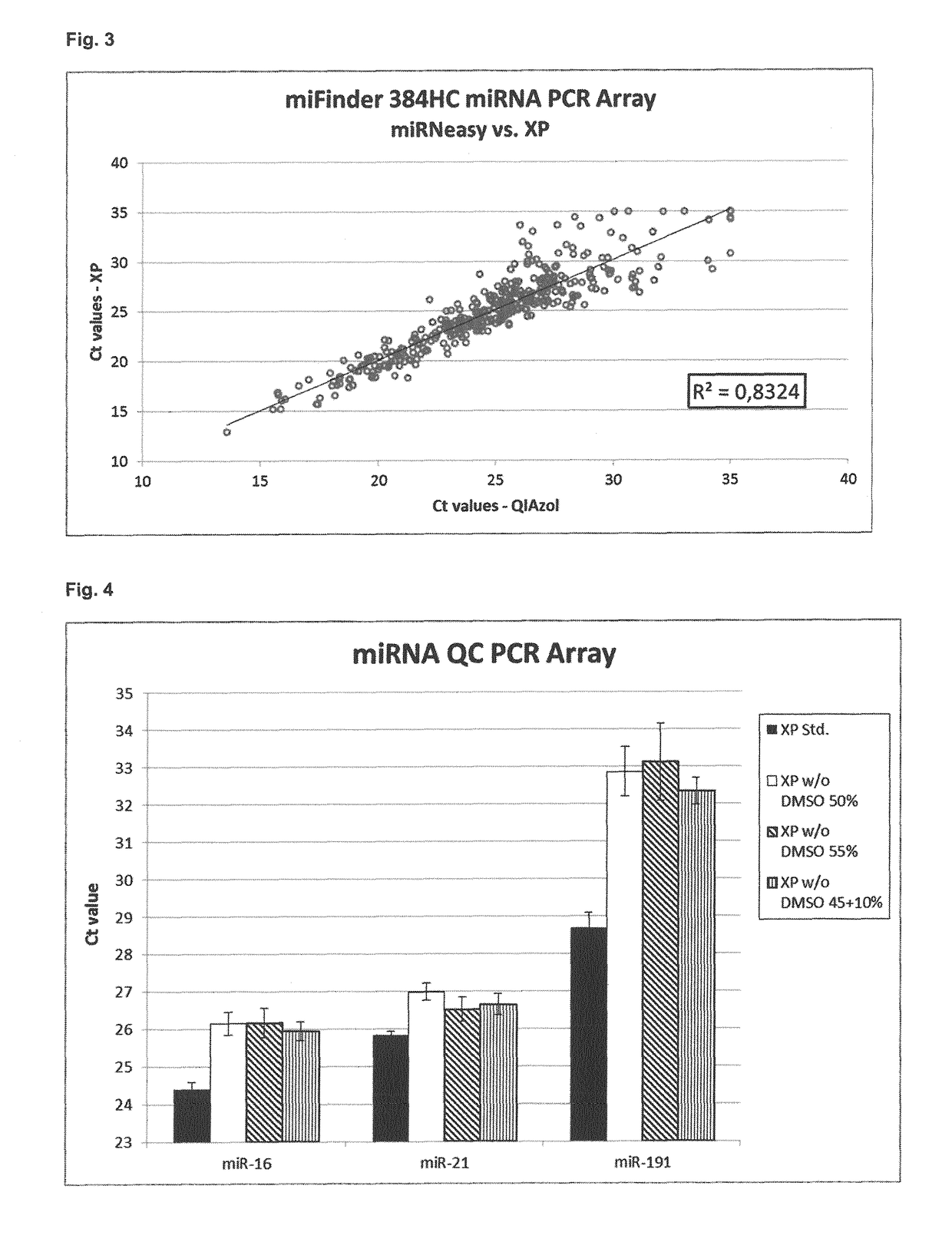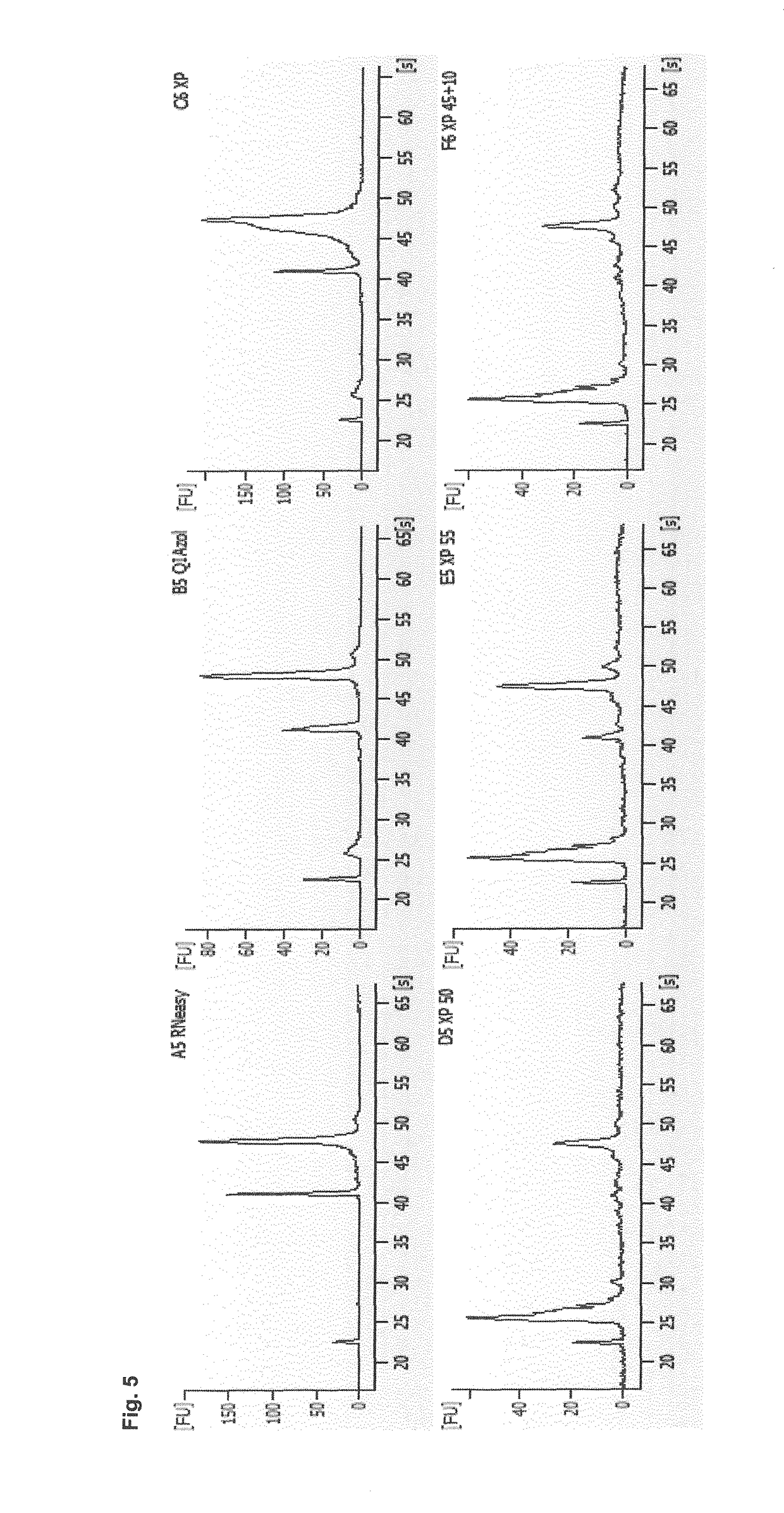Method for isolating RNA with high yield
a high-quality, rna-based technology, applied in the preparation of dna, microbiological testing/measurement, biochemistry apparatus and processes, etc., can solve the problems of troublesome isolation procedure, small rna in total rna insufficient amounts for subsequent analysis, and standard protocols used to isolate total rna are usually not ideal,
- Summary
- Abstract
- Description
- Claims
- Application Information
AI Technical Summary
Benefits of technology
Problems solved by technology
Method used
Image
Examples
specific embodiments
[0143]Non-limiting specific embodiments of the method of the invention will be described in the following.
[0144]According to one embodiment, the method comprises the following steps[0145]a) preparing a precipitation mixture by adding at least one metal cation precipitant in form of a dissolved salt and at least one organic solvent which is selected from aprotic polar solvents and protic solvents to the sample, wherein in case a protic solvent is used preferably the protic solvent is a water-miscible alcohol, more preferred selected from ethanol and isopropanol, and wherein the precipitation mixture[0146]i) comprises the metal cation precipitant salt in a concentration selected from 300 mM to 625 mM, 350 mM to 600 mM or 400 mM to 550 mM;[0147]ii) comprises the organic solvent in a concentration selected from 6.5% to 14.5%, 7% to 14%, 8% to 13.5%, 9% to 13% or 9.5% to 12%;[0148]iii) comprises at least one buffering agent; and[0149]iv) has an acidic pH value that lies in the range of 3...
example 1
of Total RNA Including miRNA from Serum and Plasma Using the BioRobot Universal Protocol
[0279]The efficiency of the method according to the invention is demonstrated using different sample types. As sample material, different human serum and plasma samples (pooled) were used (see Table 1):
Name / sampletypeCollection tubeStoragePooled sampleSerum (neutral)Without clot1 month (−20° C.)Mixture fromactivator6 donorsSerum (activator)With clot1 month (−20° C.)Mixture fromactivator6 donorsSerum 2005Unknown~8 years (−20° C.) Mixture from2 donorsPlasma (EDTA)EDTA1 month (−20° C.)Mixture from6 donorsPlasma (citrate)Sodium citrate1 month (−20° C.)Mixture from6 donors
[0280]RNA was isolated from the same pooled sample using 1) the established QIAzol preparation method (miRNeasy for plasma / serum; involves the use of phenol) or 2) the phenol-free method according to the invention. As RNA was obtained from the same pooled sample, the RNA isolation efficiency of the methods can be directly compared.
[0...
example 2
of Isolated miRNAs
[0282]It was analyzed whether the method according to the present invention allows to isolate a comparative spectrum of miRNAs from the same sample as the established miRNeasy isolation protocol. RNA was manually isolated from a pooled serum sample using either the miRNeasy serum / plasma kit (6 replicates) or the method according to the present invention (8 replicates). The obtained eluates were analyzed using the “human miFinder 384HC miRNA PCR array”. The mean Ct values of the quantified 372 miRNAs and the mean values of both methods were directly plotted against each other in a diagram. The results are shown in FIG. 3. The achieved correlation coefficient of more than 83% shows that the method according to the present invention allows to isolate most of the analyzed miRNAs, abundant as well as rare targets, with comparable efficiency.
PUM
| Property | Measurement | Unit |
|---|---|---|
| Fraction | aaaaa | aaaaa |
| Fraction | aaaaa | aaaaa |
| Fraction | aaaaa | aaaaa |
Abstract
Description
Claims
Application Information
 Login to View More
Login to View More - R&D
- Intellectual Property
- Life Sciences
- Materials
- Tech Scout
- Unparalleled Data Quality
- Higher Quality Content
- 60% Fewer Hallucinations
Browse by: Latest US Patents, China's latest patents, Technical Efficacy Thesaurus, Application Domain, Technology Topic, Popular Technical Reports.
© 2025 PatSnap. All rights reserved.Legal|Privacy policy|Modern Slavery Act Transparency Statement|Sitemap|About US| Contact US: help@patsnap.com



